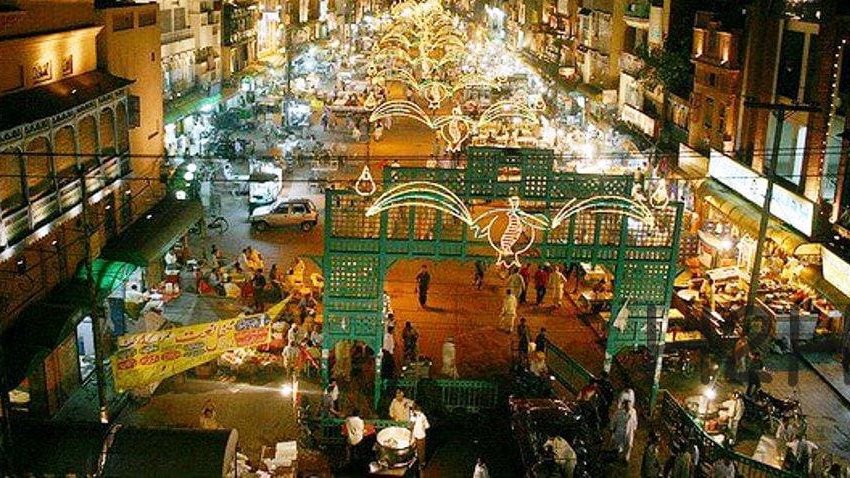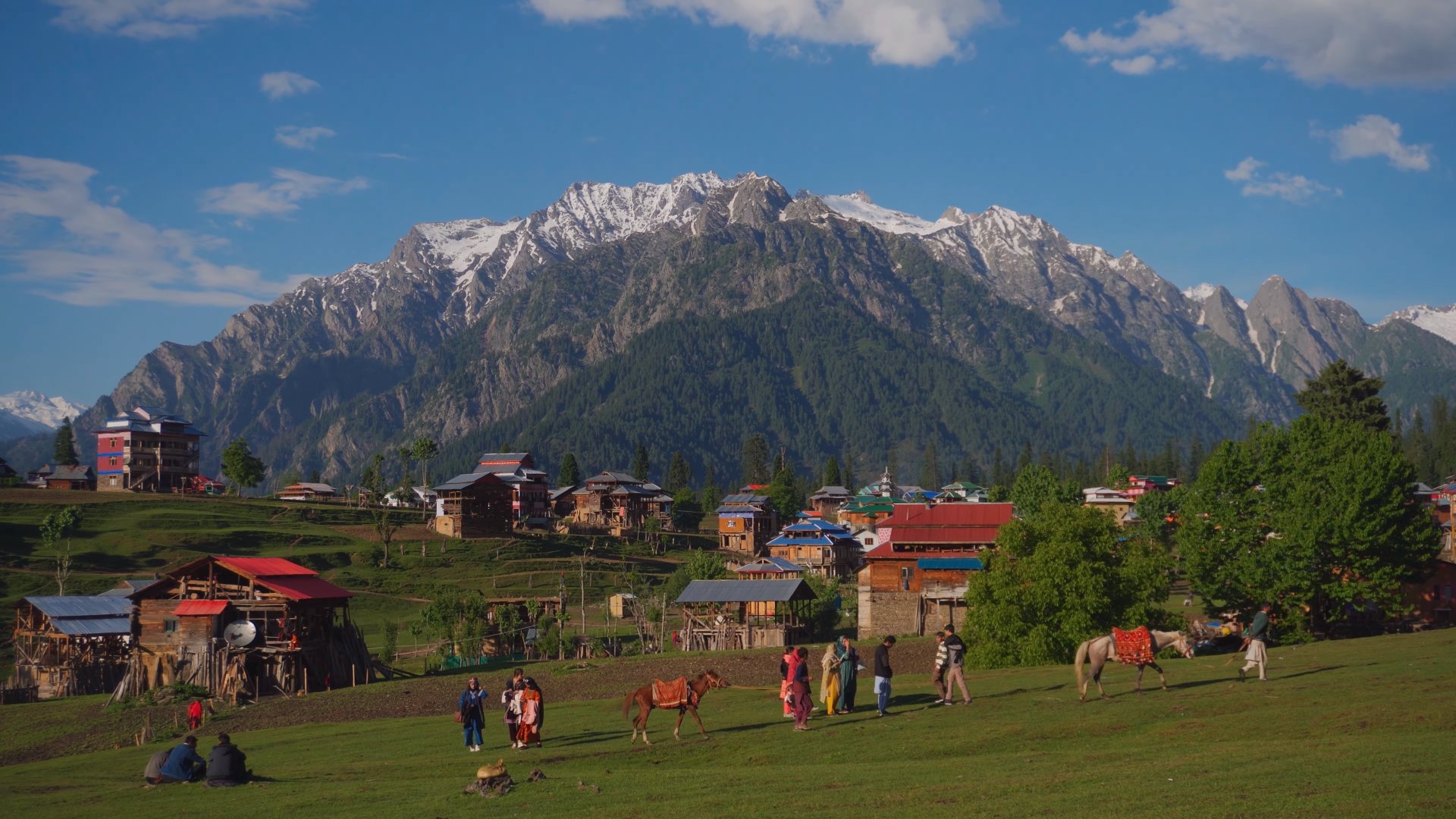Tourist Attractions In Pakistan
Golra Sharif Junction Railway Station, established in 1882 and upgraded to a junction in 1912, is a historic railway hub on Golra Road in Islamabad, lying on Pakistan Railways’ main line connecting Peshawar to Karachi. Built in Victorian-style yellow stone masonry at 1,994 feet above sea level, it served as a logistic artery during British Raj’s Afghan campaigns and remains a key trade route to Afghanistan via the Khyber Pass. The Pakistan Railways Heritage Museum, inaugurated in 2003 and renovated in 2018, houses relics from over 150 years of rail history, including steam locomotives, saloon cars, and artifacts like a 1965 war-captured token machine. Surrounded by 125-year-old banyan trees, the station and museum attract tourists, railway enthusiasts, and locals, especially during the annual Urs festival.
The Pakistan Monument, located in the Shakarparian Hills of Islamabad, is a national symbol of unity, representing Pakistan’s provinces, territories, and cultural diversity. Designed by architect Arif Masoud and inaugurated in 2007, the monument features a petal-shaped structure resembling a blooming flower, complemented by intricate murals and a crescent-star platform. Adjacent to it, the Pakistan Monument Museum showcases the country’s history, independence movement, and cultural heritage through artifacts, exhibits, and multimedia displays. Set amidst lush gardens with panoramic views of Islamabad, it is a must-visit for tourists and history enthusiasts.
The Centaurus Mall, opened in 2013, is Islamabad’s premier shopping and entertainment destination, located on Jinnah Avenue in Sector F-8. Spanning 6.6 acres, this mixed-use complex, designed by British firm WS Atkins, features a four-story mall with over 250 shops, a five-screen cineplex, and Fun City for kids. Part of a larger development with three 22-floor towers (including residential apartments, offices, and a hotel under construction), it boasts modern architecture with a glass facade and skylights. Despite criticisms like entry fees for bachelors and occasional maintenance issues, the mall’s diverse brands, dining options, and family-friendly vibe make it a must-visit for locals and tourists.
Anarkali Bazaar, named after the legendary courtesan Anarkali, is one of Lahore’s oldest markets, dating back to the Mughal era, located in the heart of the Walled City. Spanning Old Anarkali (traditional goods, spices) and New Anarkali (modern shops, electronics), it offers a vibrant mix of shopping, street food, and cultural immersion. Known for its colonial-era architecture and bustling lanes, it attracts thousands for its handicrafts, clothing, and Punjabi cuisine like nihari and gol gappay. Despite challenges like overcrowding and limited parking, its proximity to Lahore Fort and Badshahi Mosque, along with its historical charm, makes it a must-visit cultural hub.
Altit Fort, nestled in Altit village near Karimabad, is an 1100-year-old fortress built around 900 AD, making it one of the oldest monuments in Gilgit-Baltistan. Once the ancestral home of Hunza’s ruling Mirs, this Tibetan-influenced structure features mud-and-stone walls, wooden beams, and a commanding watchtower overlooking the Hunza River. Restored by the Aga Khan Trust for Culture in 2007, it now houses a museum and the Kha Basi Royal Gardens, showcasing Hunza’s Silk Road heritage and Ismaili culture. Despite challenges like over-tourism and urban growth, the fort’s intricate architecture, vibrant gardens, and stunning views of Rakaposhi (7,788m) make it a cultural treasure and a must-visit for history enthusiasts.
Hussaini Suspension Bridge, spanning the Hunza River in Upper Hunza, is one of the world’s most dangerous bridges, stretching 660 feet (194 meters) with 472 wooden planks spaced widely apart, hanging 50-100 feet above the raging river. Built by locals in 1968 after a flood destroyed an earlier bridge, it connects Hussaini village to Zarabad hamlet, serving as a vital lifeline for agricultural transport while attracting thrill-seekers for its precarious design and stunning Karakoram backdrop. Known for its swaying cables, missing planks, and lack of safety measures, it’s a test of courage, though recent maintenance has improved stability. Environmental concerns like littering and over-tourism threaten its pristine setting, but the bridge’s raw engineering and views of Passu Cones make it a must-visit for adventurers.
Khunjerab Pass, at 4,693 meters in the Karakoram Mountains, is the world’s highest paved international border crossing, connecting Pakistan’s Gilgit-Baltistan with China’s Xinjiang region via the Karakoram Highway (KKH), dubbed the “Eighth Wonder of the World.” A key part of the China-Pakistan Economic Corridor (CPEC), it facilitates trade and tourism while offering stunning views of snow-capped peaks, glaciers, and Khunjerab National Park’s wildlife, including snow leopards and Marco Polo sheep. Formed in 1982 and historically part of the Silk Road, the pass—meaning “Valley of Blood” in Wakhi—combines adventure, history, and natural beauty, though over-tourism and altitude risks require careful planning. Its monumental gate and year-round snow make it a bucket-list destination for thrill-seekers and nature lovers.
Arang Kel, perched at 8,379 feet (2,554 m) in Neelum Valley, Azad Jammu and Kashmir, is a lush meadow and village dubbed the “Pearl of Neelum Valley” for its verdant plains, pine forests, and Himalayan vistas. Located 2 km from Kel and 161 km from Muzaffarabad, it’s accessible via a 2-3 hour hike or a 1-km Pakistan Army-managed chairlift, offering thrilling views over the Neelum River. Historically a shepherds’ grazing ground, it’s now a tourist haven despite challenging roads, limited facilities, and LoC proximity, which requires an NOC for foreigners. Its serene beauty, Kashmiri hospitality, and adventure trails make it a bucket-list destination, though winter snows render it inaccessible.
Taobat, the last village in Neelum Valley, Azad Jammu and Kashmir, lies 200 km from Muzaffarabad and 39 km from Kel, near the Line of Control where the Kishanganga River enters Pakistan as the Neelum River. At 2,500 meters above sea level, this historic village in Gurez Valley is dubbed the “Jewel of Azad Kashmir” for its lush meadows, pine forests, and snow-capped Himalayan peaks. Known for its Taobat Waterfall, 400-year-old wooden mosque, and trekking trails, it attracts adventurers and nature lovers despite challenging, unpaved roads and limited amenities like hospitals or reliable communication. Heavy snowfall isolates Taobat for six months, but its cultural heritage and pristine beauty make it a must-visit.
Chandragup Mud Volcano, also known as Baba Chandragup, is a 330-ft (100-m) active mud volcano in Hingol National Park, Balochistan, revered as an embodiment of Lord Shiva by Hindus. Located 200 km from Karachi along the Makran Coastal Highway, it’s a key stop for Hinglaj Yatra pilgrims, who offer coconuts and roti after fasting and confessing sins at its crater. Formed by the Arabian Plate subducting under the Eurasian Plate, it erupts mud and methane, creating a surreal landscape. Despite littering, rugged 8-km off-road access, and no facilities, its spiritual significance, geological uniqueness, and proximity to the Princess of Hope and Hinglaj Mata Mandir make it a compelling destination.
Gwadar Port, a deep-sea port on the Arabian Sea in Balochistan, is a cornerstone of the China-Pakistan Economic Corridor (CPEC), designed to link Pakistan with global trade routes and China’s Xinjiang region. Located 629 km from Karachi, near the Strait of Hormuz, it was inaugurated in 2007 and is operated by the China Overseas Port Holding Company since 2013. Despite slow progress, security challenges, and local grievances over water scarcity and fishing restrictions, its strategic location, natural harbor, and proximity to beaches like Kund Malir make it a growing tourism and trade hub. The port’s hammerhead promontory and ongoing developments, like the New Gwadar International Airport, enhance its appeal for visitors.
Kalash Valley, nestled in the Hindu Kush mountains of Chitral, Khyber Pakhtunkhwa, Pakistan, is a cultural and scenic gem home to the Kalasha people, a minority of about 4,000-5,000 who practice a polytheistic religion tied to ancient Hinduism. Comprising three valleys—Bumburet, Rumbur, and Birir—it’s famous for vibrant festivals like Chilam Joshi, unique traditions, and lush landscapes. The Kalasha’s colorful dresses and open graveyards fascinate visitors, but over-tourism and cultural erosion threaten their heritage. With myths of descent from Alexander the Great’s armies, Kalash Valley offers an immersive experience for culture enthusiasts and nature lovers.














